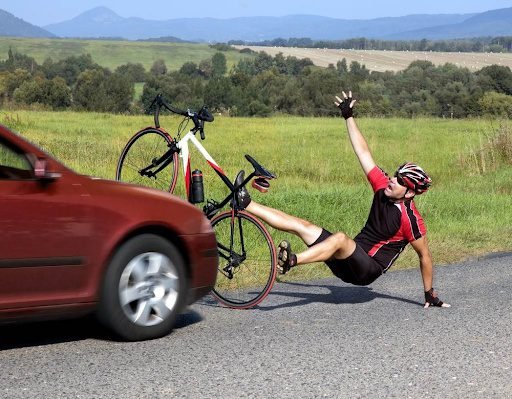Bikes follow the same regulations as cars on public roads despite their slower speed. When a rider runs a red light, swerves without signaling, or collides with a pedestrian, the question isn’t just about scraped knees and bent wheels; liability comes into play. Can I sue a biker for any harm they caused in an accident? Yes, and the results can be pretty bad, to put it simply. You can use tools such as the cycle accident compensation calculator to get an idea of how much you have to pay or how much compensation you should be paid.
Table of Contents
Understanding Negligence in Cycling Accidents
In situations involving car crashes, the judicial system often focuses on the idea of carelessness. This is, therefore, the case of someone being careless and causing harm to another person, either directly or indirectly. If someone riding a bike is negligent and causes harm to another person, physically, monetarily, or by breaking a person’s personal property, then that person on a bike will be in trouble with the law.
It is not always easy to understand who was negligent. More obvious examples of negligence include running a red light, while less obvious examples of negligence can be a failure to warn before turning. In American cases, we use the measure of a “reasonable person” to determine if the rider was at fault.
Different states have different rules about carelessness, but most of them use a method called “comparative fault.” California Civil Code Section 1714 says that anyone, even bikers, can be held responsible for harm caused by someone else’s lack of ordinary care.
Case from Real Life
A famous British biker named Robert Hazeldean was in an accident with a passenger in 2015. The court said that both parties were equally responsible, even though her phone had sidetracked the passenger. Hazeldean was compelled to pay a substantial sum in compensation and legal expenses due to her lack of liability insurance.
This case may have taken place abroad, but it shows how things may play out in the United States if a cyclist is judged partially or totally at fault.
Examples of Cyclist Negligence
All road users, including pedestrians and cars, must adhere to the same set of regulations while riding a bike. The following are some common examples of careless cycling activities:
What Happens If You’re Sued?
The first step is contacting the other party’s insurer. The involvement of a civil court may be necessary if a settlement cannot be made.
Judges will look at:
The other person may still sue you if they can prove your carelessness was a major cause of the accident, regardless of whether you’re hurt as well.
How Comparative Fault Functions
To determine liability, several jurisdictions in the US look at how much each party contributed to the disaster. You may still be held responsible for your share of the harm, regardless of how much culpability the other party has. Some states, including Illinois, Florida, and New York, use a notion of comparative negligence. For example, Florida often ranks in the top three states in the US for bike deaths; therefore, blame distribution is crucial in local collision situations.
On the other hand, if you’re discovered to be more than 50% at fault, you may not be able to collect damages at all—but you’d still be responsible for other people’s losses—in states that use the 50% comparative fault rule.
What To Do After a Crash
If a collision occurs, stay calm and follow these steps below:
If legal action is necessary, these measures may be very helpful. Bonus: Look at the info about what to do after a bicycle accident to learn more about your first steps.
Final Thoughts
Despite the rarity of lawsuits, injuries sustained by cyclists may lead to financial responsibility. Smart and safe riding requires knowing your obligations and legal risks.
When you are riding your bike, do not forget that the law concerns you. Ride safe, and be sure to get liability insurance in case of an accident. Instead of handling a bicycle accident lawsuit alone, contact specialists to defend your rights and future.


